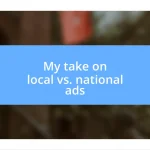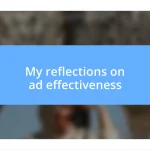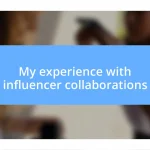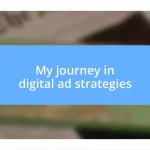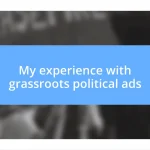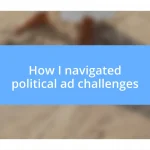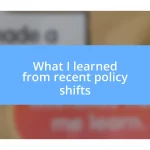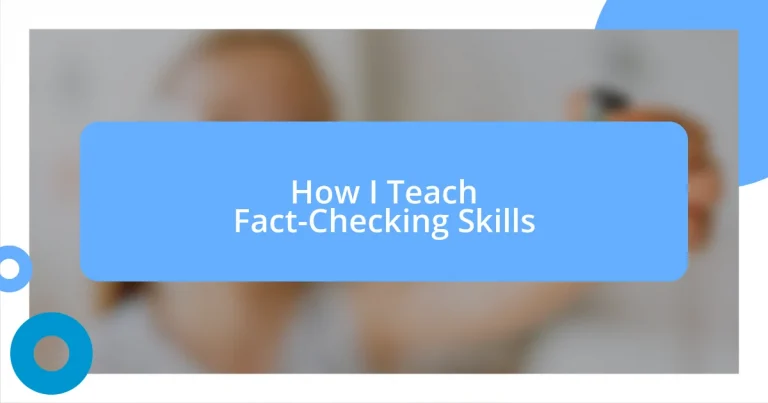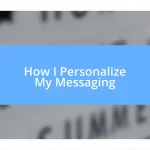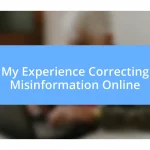Key takeaways:
- Fact-checking fosters critical thinking and empowers individuals to navigate and verify information actively rather than passively accepting it.
- Identifying reliable sources and evaluating the credibility of information is essential, utilizing characteristics such as source authority, transparency, and evidence.
- Incorporating interactive fact-checking exercises in the classroom enhances students’ skills and instills a sense of civic responsibility and inquiry.
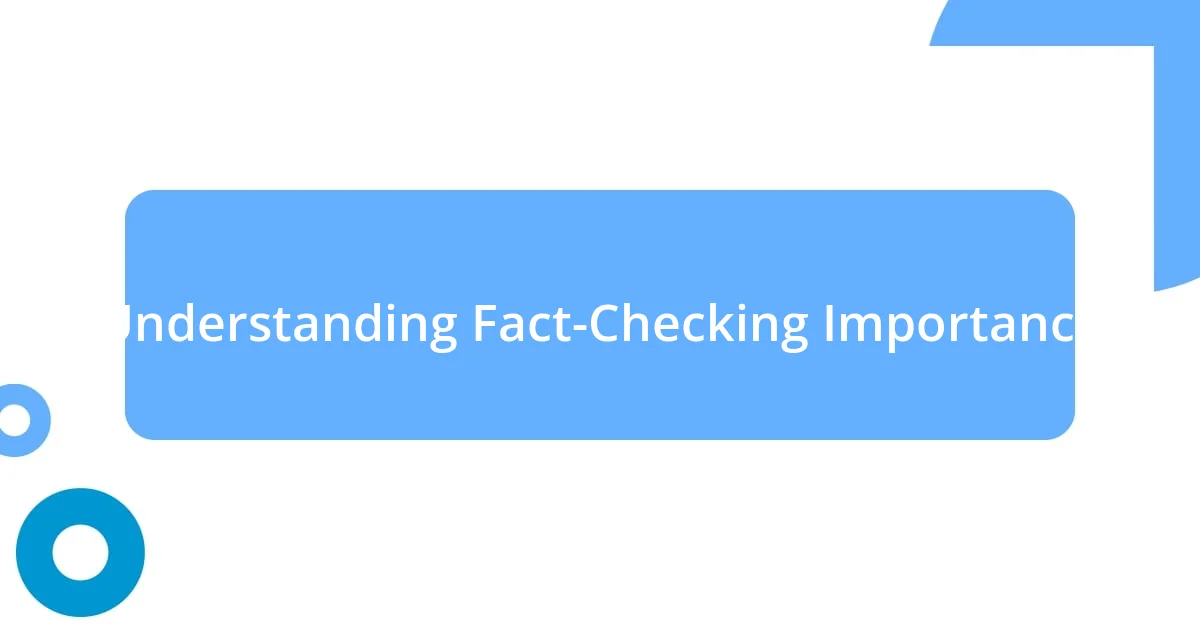
Understanding Fact-Checking Importance
Understanding the importance of fact-checking in today’s digital age is crucial. I remember a time when I believed everything I read online, and that led me to spread misinformation among friends. It was a wake-up call for me when someone confronted me about a false claim I shared, making me realize how easily misinformation can ripple out and impact others.
Fact-checking isn’t just about verifying information; it cultivates critical thinking. Have you ever questioned a headline that seemed outrageous? I’ve found that those moments of doubt can lead to deeper exploration. By teaching others to fact-check, I empower them to make informed decisions rather than just accepting things at face value.
In classrooms where I’ve integrated fact-checking into discussions, I’ve witnessed students transform from passive consumers of information to active investigators. Their engagement lights up when they realize they have control over the information they encounter. This shift highlights that fact-checking isn’t merely a skill; it’s a vital tool for navigating our complex, information-rich world.
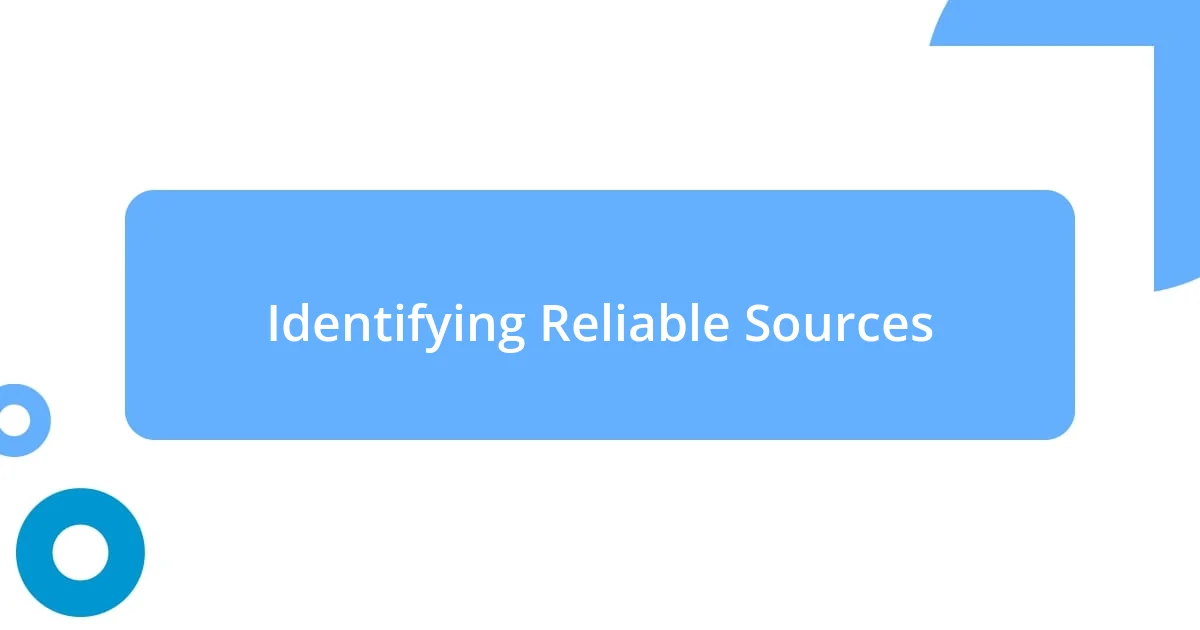
Identifying Reliable Sources
Identifying reliable sources can sometimes feel overwhelming, especially with the sheer volume of content online. I recall a moment when a student brought an article claiming a cure for a common cold, and it sparked a great discussion. We dove into the details, looking for the author’s credentials. It was eye-opening to see how a quick look at the source’s background could reveal its credibility—or lack thereof.
I often guide my students to look for specific markers of trustworthiness. For instance, publications associated with reputable institutions often have well-established editorial standards. Think about a news outlet like BBC versus an anonymous blog. The contrast is clear; the former typically undergoes rigorous fact-checking processes, whereas the latter might just share opinions without proper backing.
A practical tip I find effective is checking for citations within an article. If the source cites peer-reviewed studies or expert opinions, it usually enhances its reliability. I encourage my students to ask themselves, “Does this source back up its claims with evidence?” The skill of discerning reliable sources isn’t just instrumental; it fosters a sense of confidence and curiosity that’s vital in navigating our information-heavy landscape.
| Reliable Source Characteristics | Unreliable Source Characteristics |
|---|---|
| Credible author or organization | Anonymous authors or questionable affiliations |
| Peer-reviewed studies and evidence | Opinions without support or evidence |
| Published by reputable news organizations | Blogs or websites with no editorial oversight |
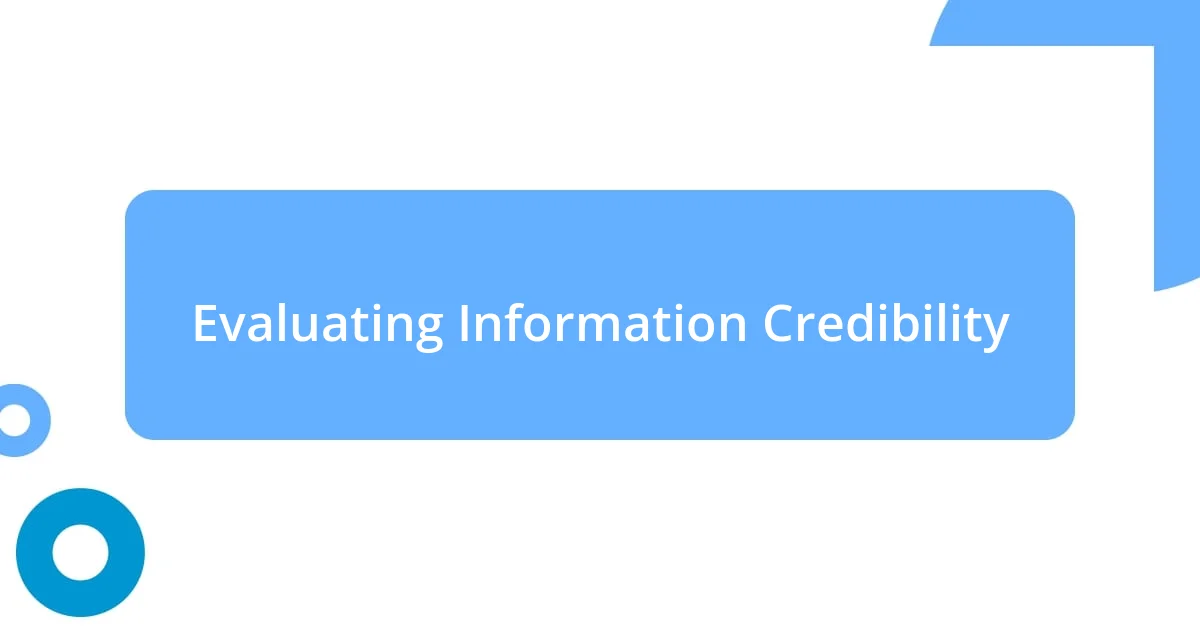
Evaluating Information Credibility
Evaluating the credibility of information is a skill that I believe is often overlooked. One day, a student shared a sensational article about a celebrity’s scandal, but I noticed it was riddled with unverified claims. I suggested we assess its source together. Through this exercise, the students experienced that moment of realization—where discernment became a shared goal, and they learned not to take every headline at face value. It was as if a light bulb went off, reflecting how crucial it is to dig deeper beyond the surface level.
When assessing information credibility, I encourage my students to focus on these key aspects:
- Source Authority: Who is the author? Do they have expertise on the topic?
- Transparency: Is the publisher clear about their identity and purpose? Look for contact information or a mission statement.
- Evidence: Are claims substantiated with data, research, or expert commentary?
- Bias: Does the piece exhibit a strong bias? Recognizing emotional language can indicate subjective viewpoints.
- Timeliness: When was the information published? Relevant data may change rapidly, especially in fast-moving topics like technology or health.
These criteria empower students to develop a keen eye for accurate information. I find it rewarding to witness their growth and eagerness to share their findings with peers, fostering a culture of critical thinking in the classroom.
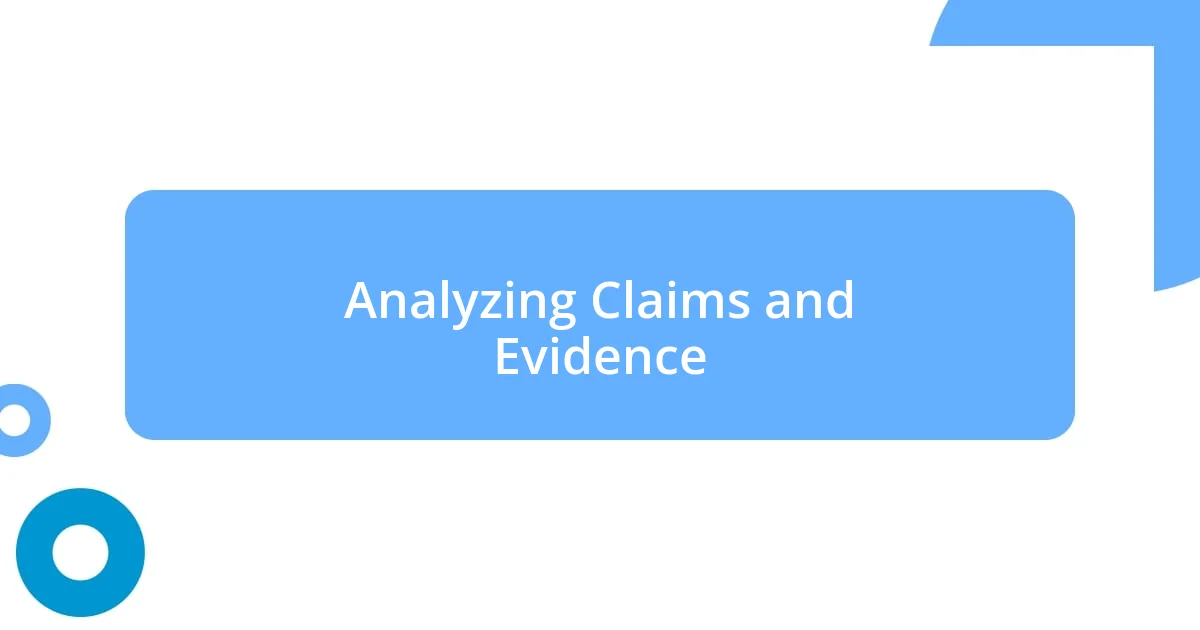
Analyzing Claims and Evidence
When it comes to analyzing claims and evidence, I often remind my students that we are detectives in a world filled with information. I vividly remember a discussion sparked by a viral social media post claiming a new miracle diet. We dissected it together, zooming in on the evidence provided. Was it based on robust scientific research, or was it merely anecdotal? That moment of questioning revealed how claims can often distract us from the lack of substantial backing.
It’s fascinating how a simple chart or graph can sway opinions. One day, a student presented statistical data claiming a decline in off-road vehicle accidents due to a new regulation. I challenged them to double-check the data’s source and methodology. The moment they discovered the statistic came from a biased organization with a vested interest in promoting the regulation, I could see the light of understanding in their eyes. Analyzing claims isn’t just about the surface; it’s about looking deeper, asking the right questions, and evaluating the evidence behind those claims.
I encourage my students to think critically about the implications of the evidence as well. For example, when examining a health-related claim, I ask them, “What are the potential consequences of believing this without scrutinizing it first?” This approach not only sharpens their analytical skills but also nurtures a sense of responsibility. In my experience, empowering students to analyze claims fosters a habit of inquiry that is essential in our rapidly evolving landscape of information.
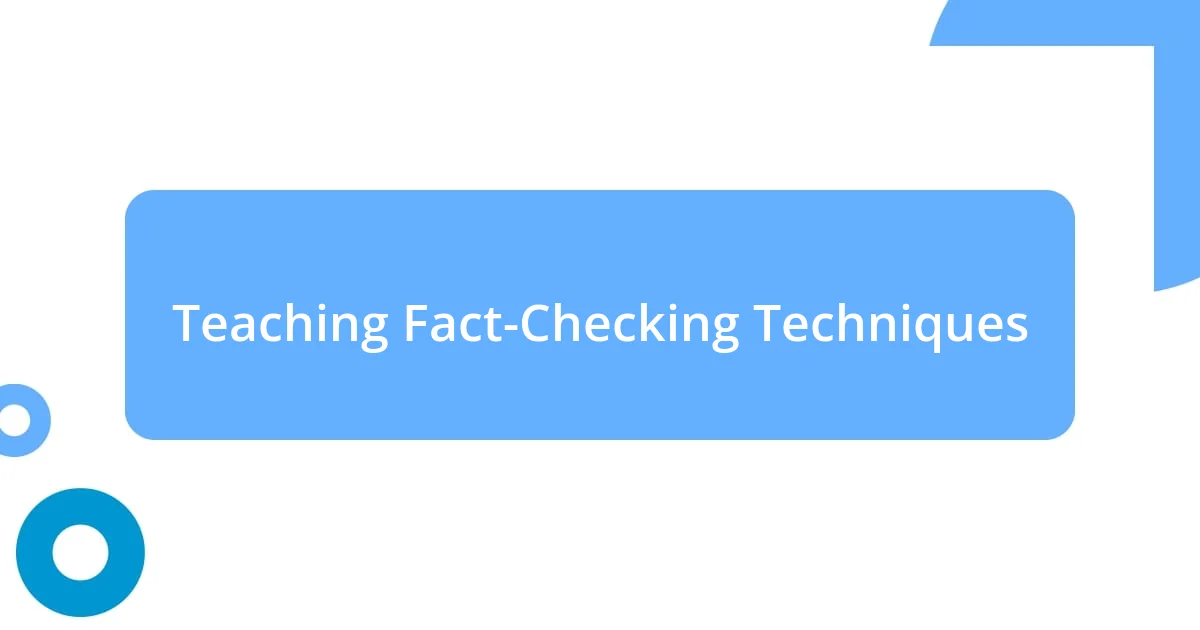
Teaching Fact-Checking Techniques
Teaching students to fact-check effectively requires practical techniques that I find resonate well in the classroom. For instance, I recall a session where I introduced the concept of reverse image searching, which seemed to astound my students. They were thrilled to learn they could verify the authenticity of images simply by using tools like Google Images. It brought an element of excitement and empowerment, as they realized they weren’t just passive consumers of information but active seekers of truth.
Another valuable technique I emphasize is cross-referencing information across multiple reputable sources. During a recent lesson, a student found a news story claiming drastic weather changes were due to a new government policy. I encouraged everyone to seek out other articles on the same event and evaluate the similarities and differences in reporting. Some students were surprised to discover that many reputable sources didn’t even cover the claim, which sparked a vibrant discussion on media representation. Were they aware that not all headlines carry equal weight? This critical thinking exercise opened their eyes to the varied landscape of news reporting and the importance of validating claims.
The importance of teaching students to differentiate between opinion pieces and factual reporting cannot be overstated. I once guided a group of students through an opinion editorial that asserted a personal viewpoint on climate change. As we dissected the piece, I watched my students grapple with distinguishing emotional rhetoric from factual content. They began to see how persuasive language could shape perceptions, leading me to ask, “How often do we fall for the allure of a strong opinion?” Witnessing their thoughtful reflection made me realize that understanding the difference is not just an academic exercise—it’s a life skill that enriches their decision-making.
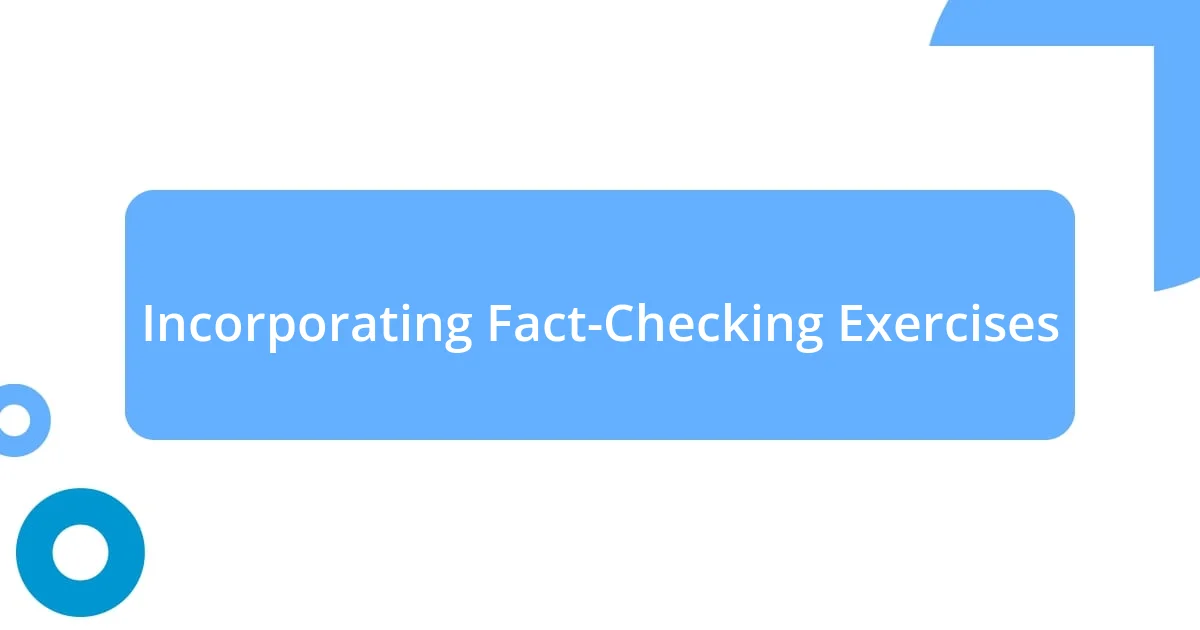
Incorporating Fact-Checking Exercises
Incorporating fact-checking exercises into my teaching routine has been a game changer for my students. One exercise I absolutely love is the “Myth or Fact” game. After splitting the class into teams, I present various claims—some true and others fabricated. The lively back-and-forth debate that ensues is incredible. I can see their excitement as they defend their positions, driven by the thrill of unleashing their research skills. It’s those “aha!” moments when they realize how easily misinformation can spread and that they have the power to challenge it.
Another exercise I found particularly impactful involves real-time fact-checking during class discussions. I recall a day when a student cited a statistic about social media usage that didn’t quite sit right with me. Instead of allowing the discussion to flow uninterrupted, I encouraged the group to pause and look it up. Watching their eyes widen as they uncovered the truth—or lack thereof—was priceless. It created a palpable sense of urgency and responsibility among them. “What if we hadn’t checked?” I asked. That question hung in the air, prompting them to reflect on how often they accept information without verification in everyday life.
I also like to incorporate analysis of real-world events into fact-checking exercises. For instance, during an election cycle, I prompted my students to fact-check campaign ads and speeches. I remember vividly the frustration and disbelief on their faces as they uncovered exaggerations and blatant inaccuracies. This exercise didn’t just teach them how to fact-check; it instilled in them a vital sense of civic responsibility. “How can we make informed choices if we don’t know what’s true?” I ask them, fostering a sense of duty to dig deeper. Seeing my students develop critical thinking skills in this way is incredibly rewarding—it reassures me that these lessons resonate beyond the classroom.
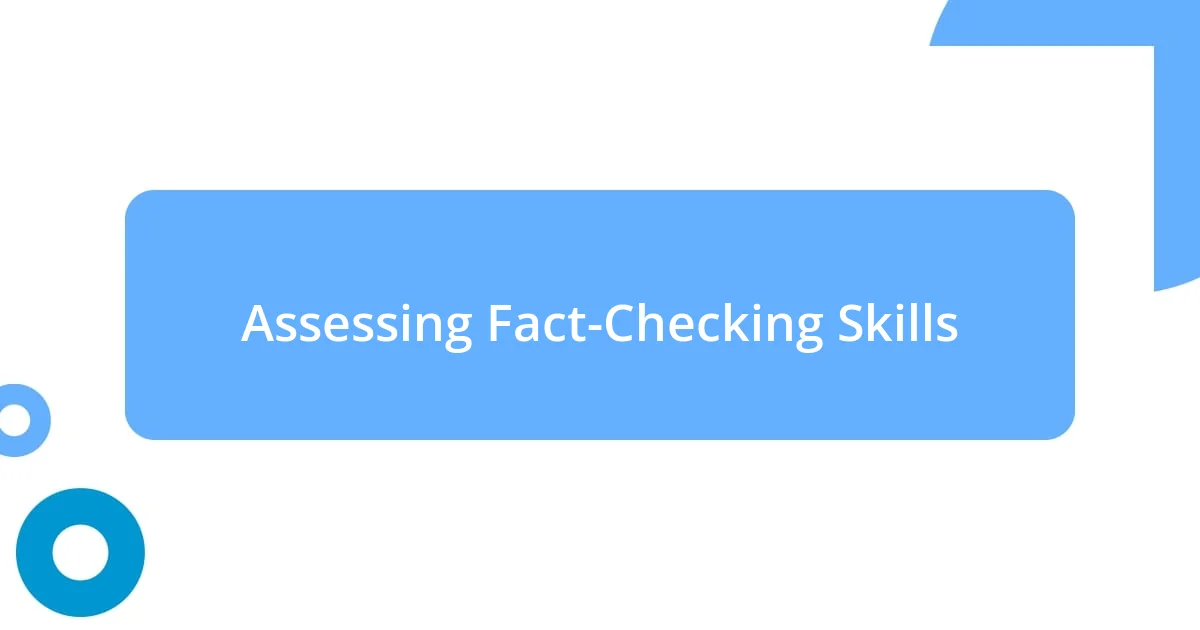
Assessing Fact-Checking Skills
Assessing fact-checking skills is multi-dimensional and requires a keen understanding of students’ capabilities. I often use a simple quiz to gauge their understanding of various fact-checking methods. When I unexpectedly tossed in a controversial statement about a viral social media challenge, I was intrigued by the varied responses. Some students immediately reached for their devices, while others hesitated, unsure of how to proceed. It was a clear indicator of the range of skills present in the room, allowing me to tailor future lessons accordingly.
One effective method I use to assess their skills is through group presentations. I assign each group a different topic and ask them to fact-check statements from various sources. I still remember the palpable excitement when one group discovered a widely circulated statistic was misrepresented. As they presented their findings, you could feel the thrill in their voices; it’s like they had uncovered a hidden treasure. This not only evaluated their fact-checking skills but also reinforced the importance of rigorous research and presentation in sharing knowledge.
I also conduct reflective discussions where students share their experiences in fact-checking outside of the classroom. During one session, a student recounted a recent online debate where misinformation had spiraled out of control. Hearing their passion about fact-checking created an unexpected sense of community. It made me ponder, how many of us leave critical discussions without examining the facts? By encouraging these conversations, I make assessments more than just a measurement of skills—they become an integral part of fostering a culture of inquiry and skepticism.
